Welcome to our comprehensive guide on growing strawberries in Michigan! Whether you’re a seasoned gardener or just starting out, this article is your go-to resource for ideal timing and helpful tips. Discover the secrets to successful strawberry cultivation in the Great Lakes State and get ready to enjoy juicy, homegrown berries all season long.
Types of Strawberries
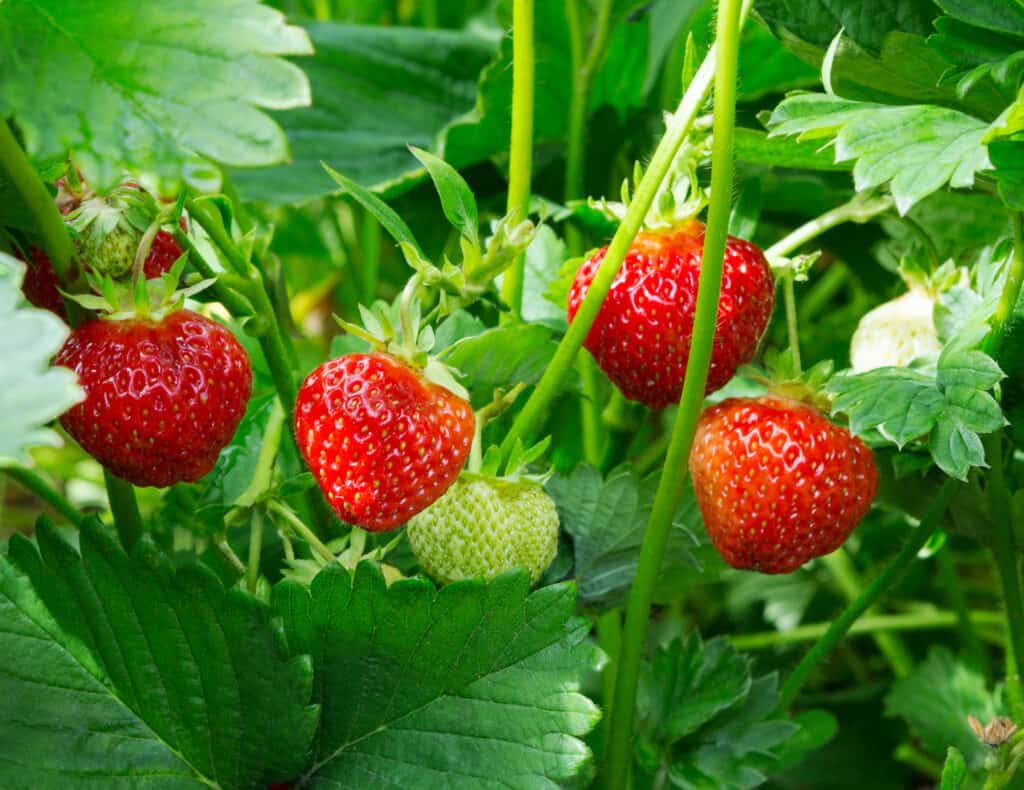
Strawberries come in June-bearing or overbearing varieties.
©iStock.com/romiri
There are many different types of strawberries available, each with varying requirements for temperature, soil, water, and light. The most suitable variety of strawberries for a Michigan household is one that is known to thrive in northern climates. It is important to consider the micro-climate of your home when making a selection.
There are two main varieties to consider: June bearing and everbearing. June-bearing plants bloom in May and produce a single, large harvest by the middle of summer, while everbearing plants will yield multiple harvests throughout the growing season.
When it comes to deciding which type of strawberry is best for your home, it depends on what your goals are. June-bearing strawberries generally produce one massive harvest per year, although you have to wait until the plants are two years old. These berries are usually quite large and great for making jams or freezing for later.
On the other hand, everbearing strawberries offer multiple harvests throughout the season, although the berries may be smaller in size. If you want a steady supply of fresh strawberries without any need for preservation, go with everbearing varieties. Once you’ve chosen, it’s time to narrow down the specific types of strawberries you’d like to grow. We’ll provide some suggestions, but feel free to experiment.
June-Bearing Strawberry Cultivars for Michigan
- Allstar – A vigorous and productive cultivar, Allstar is a reliable and consistent choice with large, flavorful berries.
- Earliglow – This cultivar is widely adapted and performs well in a variety of growing conditions, producing large, sweet berries.
- Honeoye – A disease-resistant cultivar, Honeoye is perfect for Michigan gardeners looking for a dependable crop of juicy and flavorful berries.
- Old North Sea – This cultivar is highly recommended for Michigan gardeners, as it produces large, sweet berries with great taste and good shelf life.
- Jewel – This is a popular choice for Michigan gardeners due to its high yields of large, juicy berries with an excellent flavor.
Everbearing Strawberry Cultivars for Michigan
- Ogallala – This early-ripening cultivar produces large, sweet berries that are well-suited for Michigan’s climate.
- Ozark Beauty – This hardy cultivar produces a high yield of large, flavorful berries throughout the growing season.
- Tristar – This disease-resistant cultivar produces medium-sized berries that are ideal for jams, jellies, and preserves.
- Albion – This high-yielding cultivar produces a large crop of extra-sweet, flavorful berries.
- Quinault – This mid-season cultivar produces large, firm berries that are perfect for eating fresh.
When to Plant Strawberries in Michigan
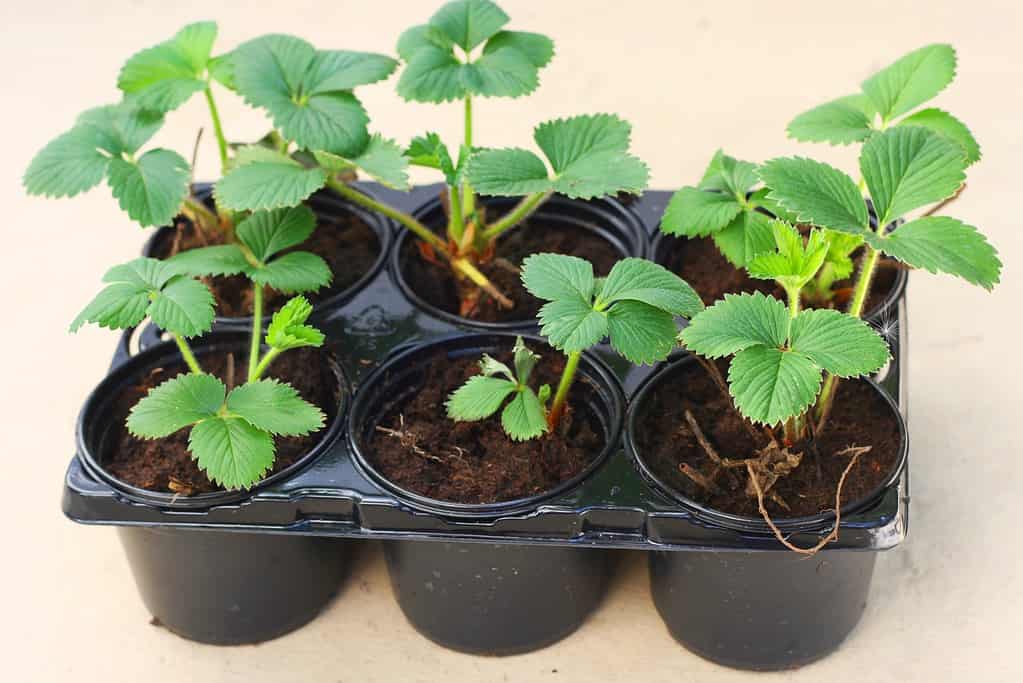
Strawberry plants are available at garden centers in Michigan in the early spring.
©padu_foto/Shutterstock.com
The general consensus is that strawberry planting should occur in late spring or early fall. You definitely do not want to plant strawberries during the heat of summer.
If you opt for spring planting, you can plant strawberries as early as the soil can be worked. This is usually late April or early May for most of the state.
In northern regions of Michigan, fall planting should occur in late August or early September. This will give the plants the opportunity to become well-established and form a strong root system before the cold weather sets in. In southern regions, planting can occur a bit later, usually around mid-September.
Preparing the Soil for Growing Strawberries in Michigan

Add compost or other organic matter before planting your strawberries.
©Singkham/Shutterstock.com
Creating the right soil environment is essential for giving your strawberries the best chance of success. Strawberries need soil that is well-drained, filled with organic matter, and has a slightly acidic pH (between 5.5-6.5).
If you are planting them directly in the ground, Michigan’s soil can vary from sandy in the northern and western parts of the state to clay and loam in the south. If you are not sure what type of soil you have, try doing a DIY soil test. You may find that you have different types of soil in your yard.
Benefits of Using Raised Beds for Growing Strawberries
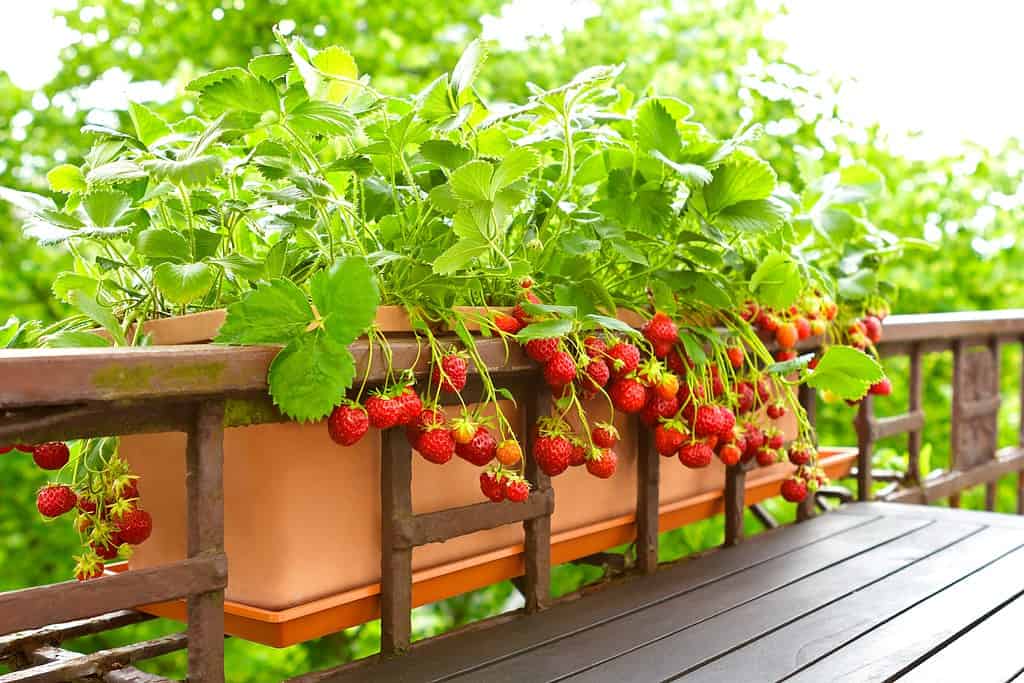
A raised bed, container, or window box gives you plenty of room to grow strawberries.
©Agenturfotografin/Shutterstock.com
Raised beds offer a variety of benefits when it comes to growing strawberries. The raised beds are easier to maintain due to their contained design, as they provide more control over the soil, water, and nutrients. Additionally, the soil in raised beds can be amended with organic matter, which helps to improve soil structure and drainage. This can also reduce the risk of fungal diseases that can affect strawberry plants.
Raised beds also provide better air circulation, which helps to reduce the risk of mold and mildew. This is especially important during the wetter months of the year when these diseases can be more prevalent. Additionally, raised beds can help to keep weeds and pests away from strawberry plants. This minimizes the need for the use of herbicides and pesticides, which can be harmful to the environment.
Finally, raised beds can help to reduce the amount of work required to maintain strawberry plants. They provide easier access to the plants, making it easier to work on them without having to bend down. This makes it easier to pick the fruit when it ripens, as well as to remove any dead or diseased plants from the bed.
How Much Light Do Strawberries Need?
Michigan strawberries require plenty of light to reach their highest growth potential. Make sure they are in the sunniest spot you can find, and watch how the sun moves throughout the day to prevent shading, particularly for everbearing varieties. Ensure your plants get a minimum of 8 hours of sunlight daily.
Water and Mulch For Strawberries

Your strawberry plants will produce runner plants. They can zap nutrients from the main plant.
Strawberries need a lot of water – up to two inches a day – and mulching is a great way to make sure the water is retained in the soil where the roots like to grow. It is important to not put your strawberry patch in an area that is too wet, as it cannot handle standing water or soil that is consistently saturated. Straw is the best and most commonly used mulch for this purpose. Additionally, late-season watering helps with fruit bud formation for the following year, as well as reducing stress on the plants during dormancy.
Good Companion Plants for Strawberries in Michigan
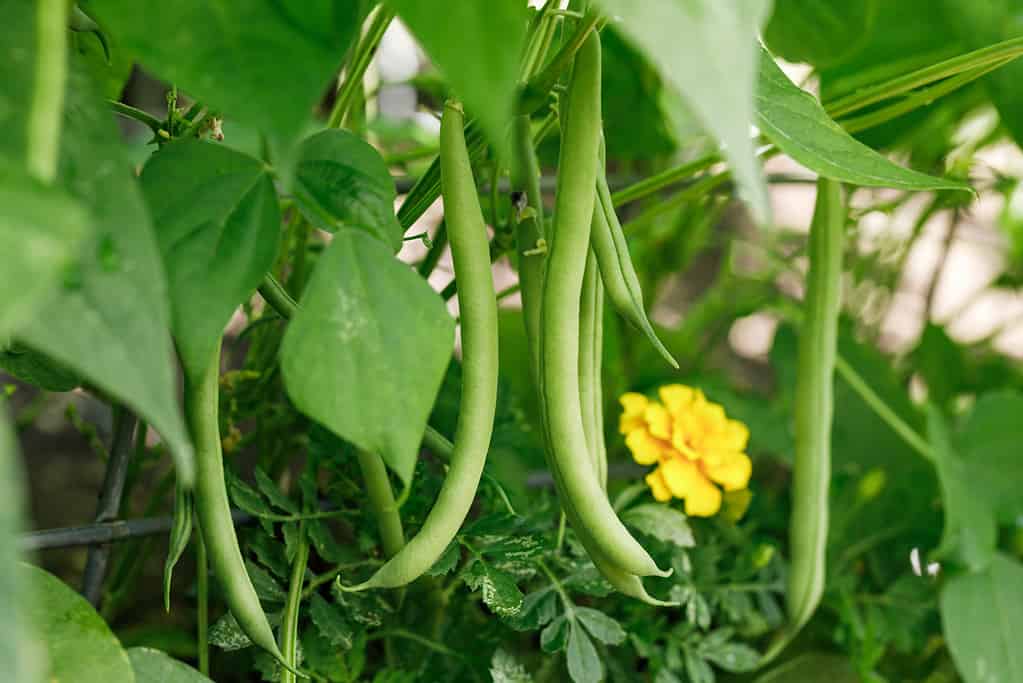
Green beans make great companion plants for strawberries and add nitrogen to the soil.
©iStock.com/eurobanks
- Nasturtium: A fast-growing plant that can act as a trap crop, drawing pests away from the strawberries.
- Marigolds: Produce a compound that repels insects, keeping pests away from the strawberries.
- Garlic: Its strong smell can help deter pests from eating strawberries.
- Legumes: Beans and peas add nitrogen back to the soil, giving your strawberries a boost of free fertilizer.
- Asparagus: This lovely stalked vegetable makes a good companion for strawberries and will happily grow among them.
Bad Companion Plants for Strawberries in Michigan
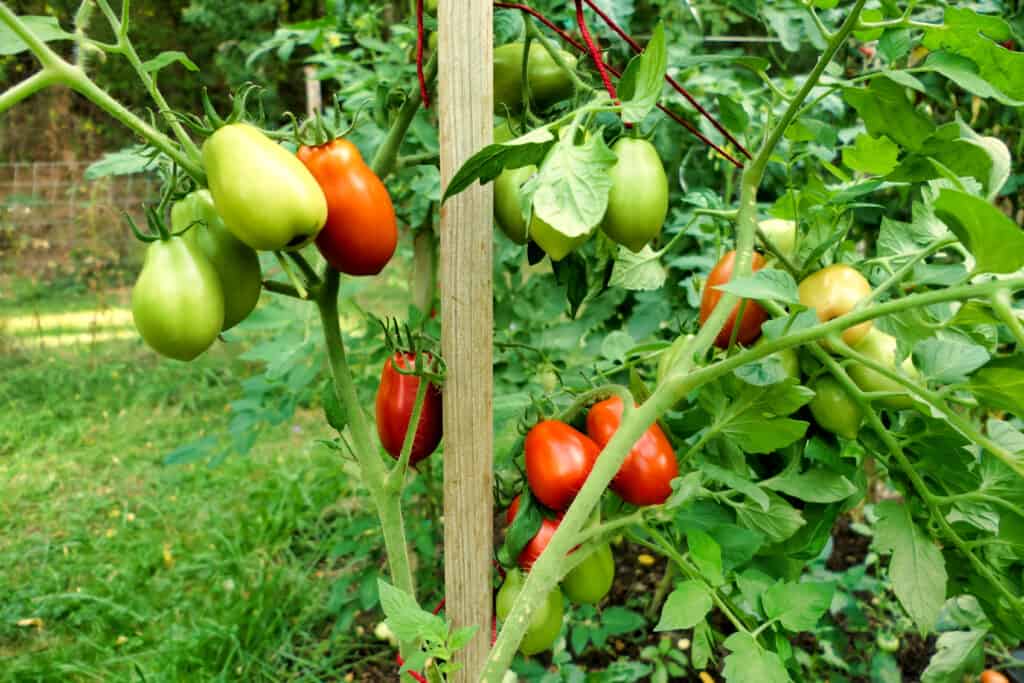
Do not plant tomatoes or other nightshade plants near your strawberries.
©iStock.com/PlazacCameraman
- Tomatoes: Tomatoes can spread diseases to strawberry plants, leading to stunted growth and poor yields.
- Potatoes: Potatoes can also spread diseases to strawberry plants, leading to wilting and foliage discoloration.
- Peppers: Peppers can compete with strawberry plants for nutrients, resulting in nutrient deficiencies.
- Eggplant: Eggplant can draw away beneficial insects and pollinators from strawberry plants, reducing yields.
Controlling Pests and Diseases
When growing strawberries in Michigan, there are a few natural tips to help control pests and diseases. The first is to make sure that the soil is well-draining and has plenty of organic matter mixed in. Additionally, it’s important to rotate the crops to different parts of the garden each year to reduce the chances of pests and diseases developing.
Crop covers can also be used to keep out pests and keep the soil warm. Pruning is another way to reduce the spread of pests and diseases, as it helps to create an open and airy canopy. Finally, it’s important to keep the area free of weeds and debris, as these can harbor pests and diseases. By following these tips, you can help your strawberry plants stay healthy and pest-free.
How to Harvest Ripe Strawberries
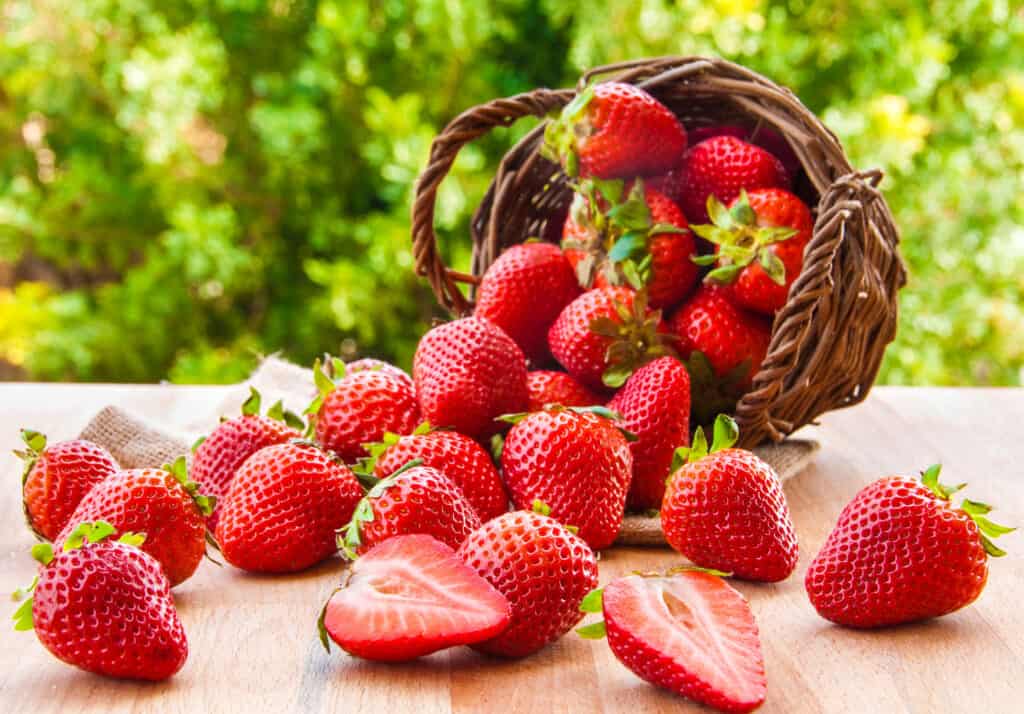
You can grow strawberries in Michigan easily with these helpful tips.
©iStock.com/MariaUspenskaya
Harvesting ripe strawberries at the peak of their flavor is a simple process that requires patience and care. Start by inspecting the plants in your garden for ripe fruit. Look for berries that are bright red and appear plump and juicy.
Gently pull the fruit off the plant and place it into a shallow container that will allow the juice from the berries to drain out. Once you have collected the ripe berries, rinse them off with cold water and let them sit for a few minutes.
Then, take the strawberries and place them upside down in a single layer on a clean dish towel. Allow the strawberries to air dry for at least half an hour. Finally, place them in a shallow container or a sealed plastic bag in the refrigerator for storage. By following these simple steps, you’ll be able to enjoy the sweet flavor of ripe strawberries at the peak of their freshness.
Ways to Store and Preserve Strawberries
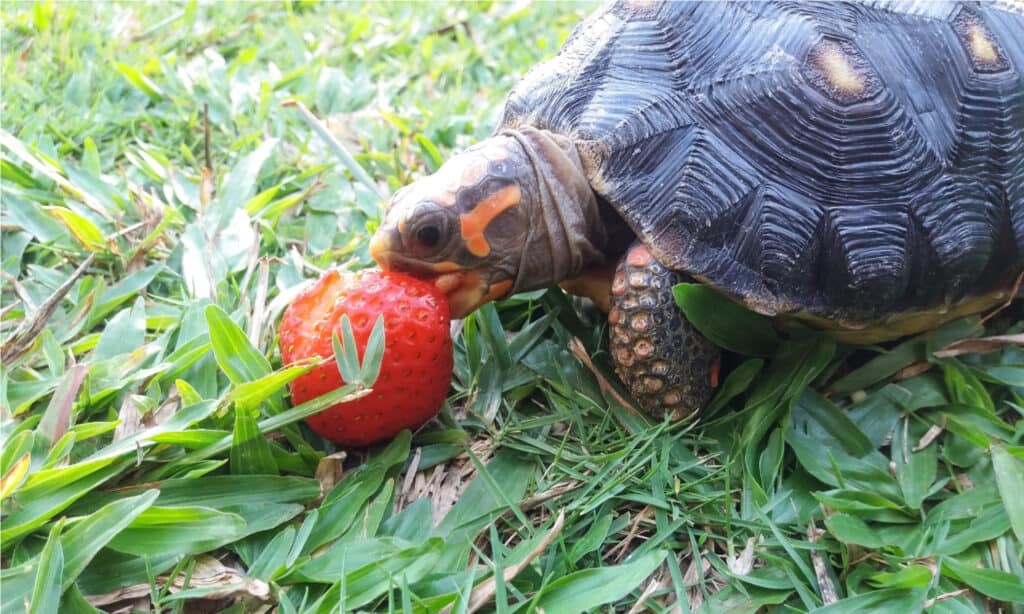
Don’t forget to share your strawberry harvest with your beloved pets.
©SimplyAdrienne/Shutterstock.com
Strawberries are a delightfully sweet and juicy summer fruit, but they can be tricky to store and preserve. Here are five easy ways to store and preserve strawberries for later use:
- Freezing: This is the simplest way to store strawberries. Simply wash and dry the strawberries, remove the caps and stems, and place them on a baking sheet lined with parchment paper. Put the baking sheet in the freezer for several hours, then place the frozen strawberries in a freezer-safe container.
- Drying: Dried strawberries are great for adding to baked goods, trail mixes, and cereals. To preserve strawberries via drying, wash and cut them into slices. Place the slices on a baking sheet and bake them in the oven at a low temperature for several hours.
- Canning: Canning is a great way to store strawberries for later use. Start by washing and slicing the strawberries, then place them in a pot with sugar and lemon juice. Bring the mixture to a boil and simmer for a few minutes, then pour the mixture into mason jars and process in a hot water bath.
- Jams and Jellies: Making jams and jellies is a great way to preserve strawberries. Start by washing and cutting the fruit, then cook it with sugar and pectin in a pot. Once the mixture has thickened, pour it into mason jars and process in a hot water bath.
- Syrups: Making strawberry syrups is a great way to preserve strawberries. Start by washing and slicing the fruit, then cook it with sugar and lemon juice in a pot. Once the mixture has thickened, pour it into mason jars and process in a hot water bath.
20 Tips for Growing Strawberries in Michigan
- Plant in well-draining soil.
- Plant in an area that gets eight hours of sunlight.
- Amend the soil with organic matter prior to planting.
- Water regularly and deeply, but avoid overwatering.
- Fertilize with a balanced fertilizer.
- Mulch to help conserve moisture and control weeds.
- Select disease-resistant varieties when possible.
- Remove any diseased plants immediately.
- Keep the area around the plants weed-free and tidy.
- Prune the plants regularly to encourage new growth.
- Thin the plants to encourage air circulation.
- Avoid working in the garden when the plants are wet.
- Rotate crops to reduce the chance of disease.
- Monitor the plants for pests and diseases.
- Harvest the berries when they are ripe.
- Remove any unripe or damaged berries.
- Plant them near legumes for a boost of nitrogen.
- Provide a thick mulch for the plants during the winter.
- Plant them in the spring as early as the soil can be worked.
- Choose cultivars that are proven to grow well in Michigan.
Thank you for reading! Have some feedback for us? Contact the AZ Animals editorial team.








